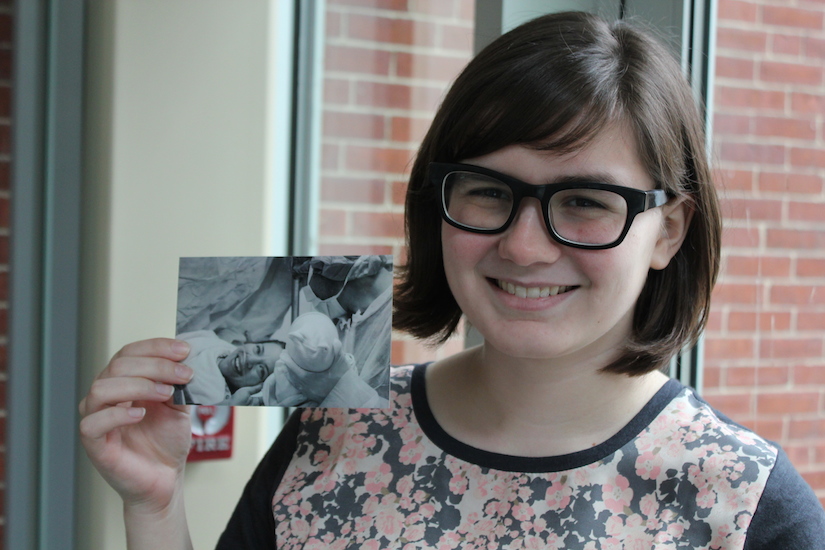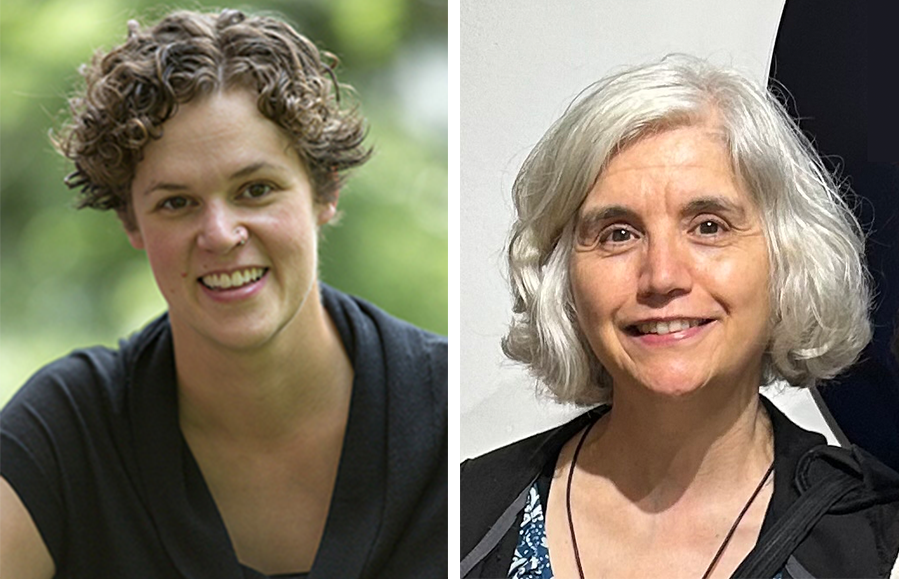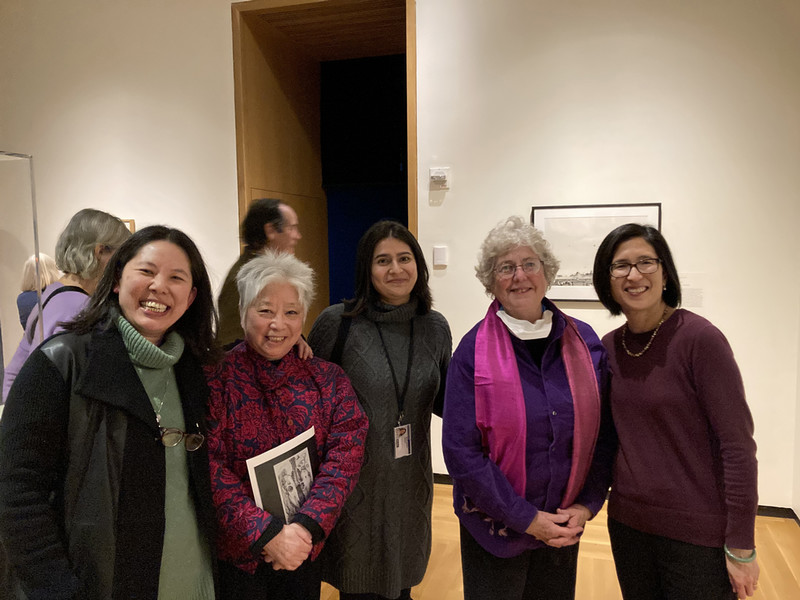Outside of Class Kaylee Wolfe ’15 Helps Birth Babies
By Rebecca Goldfine
Doula Kaylee Wolfe ’15 holds up a photo of her aunt looking at her baby for the first time.
Kaylee Wolfe’s aunt went into labor last year when Wolfe was visiting with her in Cleveland, Ohio. Since Wolfe was already with her, she stuck as close to her aunt’s side as she could until baby Jack was born in the hospital many hours later.
Witnessing the process of childbirth had an immediate and surprising impact on Wolfe, who had thought she was innately squeamish around body and medical stuff. “It wasn’t like anything I had ever experienced,” she said. “The energy of birth — there’s an intensity and an atmosphere that accompanies it. You see the power of a woman’s body. It is awe-inspiring to me.”
She said she had caught the birthing bug. “Overnight I thought, this was what I want to do,” Wolfe recalled. She added, with a smile, “I was like, how can I get back in that room? Because I don’t have a bountiful supply of pregnant relatives!”
A few months later in January, Wolfe signed up for a doula course through DONA International, the oldest and largest doula association in the world. Doulas assist women in labor, meeting their emotional and physical needs. They do not perform medical tasks; rather they make their clients comfortable, reassure and encourage them, suggest strategies for coping with pain, facilitate communication with medical staff, and advise partners on how to be helpful and involved during labor.
To become certified, Wolfe must attend and document three births and then submit a portfolio to a certifying body. Wolfe had her first paid job this summer with a woman who found her on doulamatch.net. Now, busy with college classes, Wolfe can’t attend any more births, but she plans on accepting clients again as soon as she graduates from Bowdoin in May.
The birth this summer went well — in fact so well that Wolfe was only needed for one hour and 45 minutes before the experienced mother delivered her baby. Wolfe cracked a joke that the exhilaration she has felt so far at childbirth, including at this one, might be challenged by her first non-stop 72-hour job. But, she said, she’s “confident that the energy which comes from being present at such an important moment in another person’s life will carry me through.”
When Wolfe has a new patient, she schedules at least two prenatal visits with her clients. They go through a long questionnaire on what the parents want during childbirth. Wolfe asks the mother, as well as her partner, about such matters as their health history, fears and worries, their thoughts about pain medication, and what helps them both relax.
The questions get quite detailed. For instance, Wolfe asks whether there is anybody the mother wishes could be with her as she gives birth but cannot be. At this point, Wolfe suggests they prop a photo of this person in the delivery room.
While doulas are most helpful in the birthing room, they also schedule a postpartum visit with their client. “We debrief the birth,” Wolfe said. “You start by asking what the woman remembers, and then you help her fill in the blanks.” A piece of a doula’s job, Wolfe explained, is to help the mother remember childbirth positively.
When Wolfe attends a birth, she brings along a “her bag of tricks,” she said, which includes heating pads, hair ties, cheap plastic combs for women to squeeze during contractions, a Mexican shawl called a rebozo that can help woman ease into comfortable positions, and nail polish (to help kill time and distract the mom during early labor stages or if she has an epidural.)
A sociology and Spanish major, Wolfe is using these months when she can’t work as a doula to write an honors thesis about the history of childbirth and doulas in the United States since 1900. She’s also interviewing doulas in southern Maine, asking them about their experience with hospitals and hospital workers.
After gaining more experience as a doula, Wolfe said she wants to go to graduate school for nurse midwifery. “There is nothing quite like birth,” she said. “There is something so powerful and deeply exciting about it. Being part of that experience,” she said, pausing, “I get teary.”



